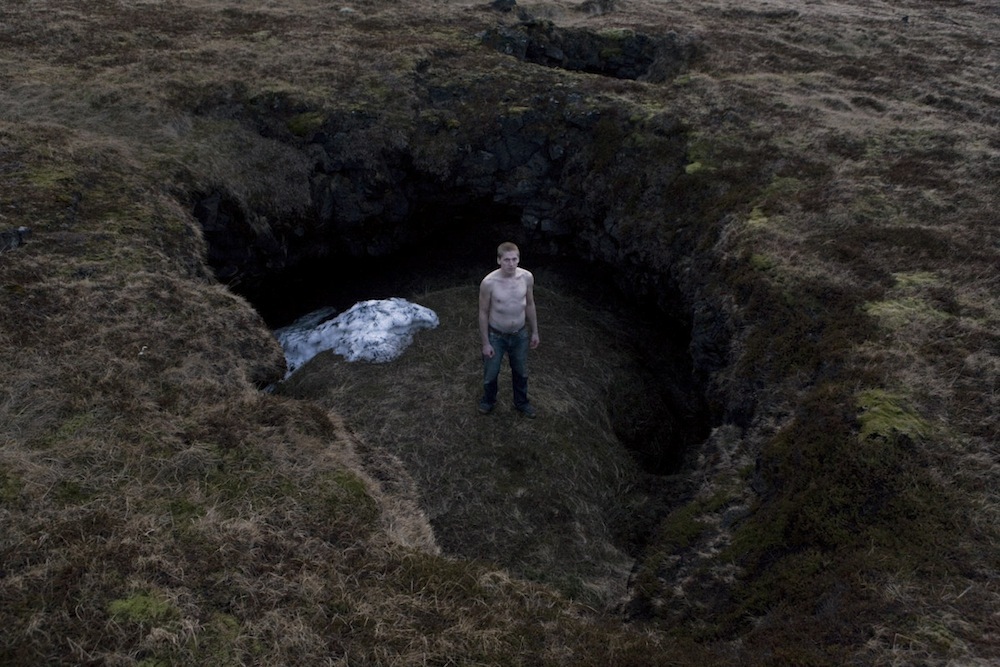Sabine Mirlesse and the Volcano
Sabine Mirlesse’s monograph As if it should have been a quarry captures the Icelandic island Heimaey and its people 40 years ago after a volcano, presumed extinct, erupted. It happened in the middle of the night without warning, showering the area in torrents of ash and fire. The only town, a fishing village of 5,300, was evacuated, as buildings disappeared beneath debris. When the eruption ceased five months later, almost everyone returned. They unearthed most of the village. They continued living.
Yet the threat of an active volcano looms still. “The landscape boils and erupts, and seems to bleed. It’s like a giant emotional entity,” says Mirlesse, who discovered Heimaey in 2011 while visiting on an artists’ residency program. “A lot of people might be deterred from making that their home. But they are proud of their island.” The collection of photographs, named after a line in Robert Frost’s poem “Directive,” contrasts the hushed, simmering terrain with its inhabitants. Images visually link individuals to the land, prompting viewers to consider the relationship.
Mirlesse shot some subjects’ with their faces caked in clay, mimicking the pale gray of the earth they’re encrusted in. Unexpectedly, the effect was eerily corporeal: “The color of the eyes of each Icelander would match the color of the clay,” recalls Mirlesse, who collected muck from nearby seismically active spots with a soup ladle. “It was freaky.”
Also included in the book are prints of muddied faces on canvases. Mirlesse explains that these are meant to evoke the ephemeral human presence on Heimaey. Through the island has been inhabited for centuries, “Residents haven’t been able to leave an imprint… just because the ground shifts and erupts,” Mirlesse describes. “How do you leave a trace?” In juxtaposed photos, smeared human features mirror the cracked ground, as though faces are looking up from the earth.
Mirlesse imagines the act of applying Heimaey’s soil to its residents as a “reverse gesture” to the possessions, identities, and memories buried in the eruption. She got the idea when she photographed an elderly couple standing on the site of their former home, which was unrecoverable after the disaster. Mirlesse asked the wife why they didn’t leave Heimaey. ” ‘Why would we?’ she answered. ‘Our whole lives are melted into the ground. We’re part of it now.’ “
AS IF IT SHOULD HAVE BEEN A QUARRY BY SABINE MIRLESSE IS OUT FROM DAMIANI ON NOVEMBER 1.







